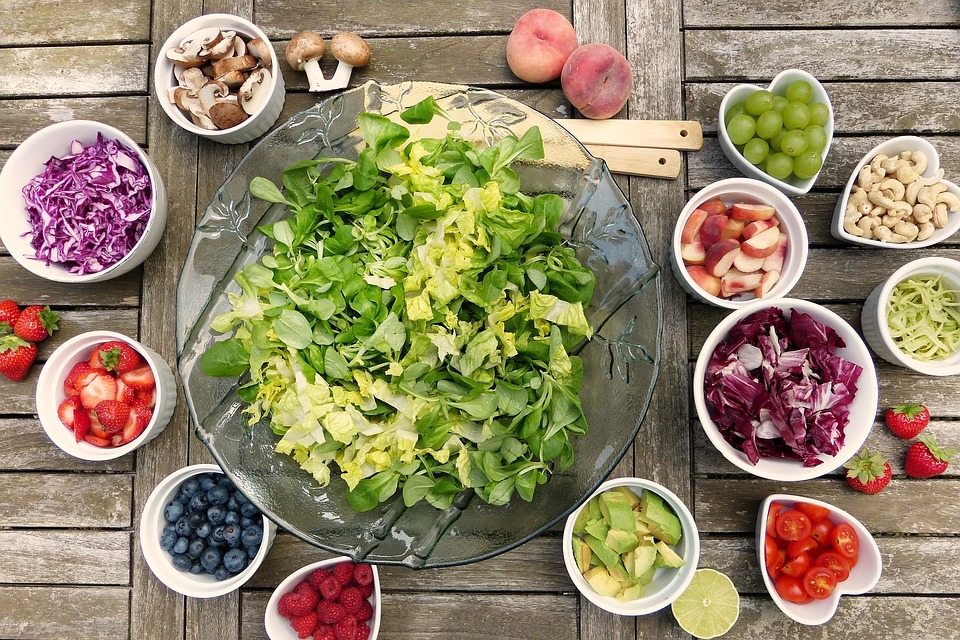There are many students attending Sinclair Community College that live with dietary restrictions, such as lactose or fructose intolerance or have a need for gluten-free products.
A concern among these students is the availability and visibility of foods that meet their conditions.
However, Sinclair Community College is planning to change it up next semester and put out more options for those with dietary restrictions.

Sinclair’s cafeteria includes many possible selections from pizza, burgers at the grill and sandwiches and wraps from the deli. There are also different guest restaurants or fast food options that come to the cafeteria.
This all helps to spread different varieties of food to students so they have a large array of options to choose from.
Even the students that lack dietary restrictions or eat vegan believe that the school cafeteria should offer a broader selection for students that need them.
Melody Baccos, a Sinclair student, does not have any restrictions, but her boyfriend is lactose intolerant. She believes that there should be more options, as “they need to eat too.”
The students that have restrictions typically either have lactose or gluten intolerance. Many also choose to live a vegan or vegetarian lifestyle for health or dietary reasons.
In addition to dietary restrictions, a lot of people go vegan for health reasons, to make sure that they eat right.
Vegans engage in not eating meat and dairy for personal reasons as well. Many do it because they empathize with the animals that are killed for their meat or are kept in captivity.

“Vegetarianism is a choice and if you like meat that wouldn’t be a choice,” David Clark, chairperson and professor of the dietetics and nutrition department, said.
By a rough estimate, 75% of the U.S. population has dietary restrictions. Some are obviously aware of their dietary restrictions while others aren’t.
“If you look at in a more scientific aspect you can see a lot of younger people have it,” said Faith Seaborn, president of the Dietetics Club.
Solutions for those with these conditions would be simple to roll out. For example, gluten options such as adding whole grain bread or non-lactose milk from cashews, almonds, coconut and rice could solve the problem.
The Dietetics Club is helping to “provide healthy nutritious lunches to the students of Sinclair,” Seaborn said.
The club plans to start a food pantry for students. Each person would receive a bag and it would be structured like other pantries; they would get two vegetables, two fruit and one grain. They would have it twice a month. The club also holds a 5K walk every spring.
“Dietetics Club sat down and are hoping to have more outreach to the campus during the summer,” Seaborn said. They are in building 14 room 425, and they are ready to spice up more of the summer.
In addition, the dietetics and nutrition department is located on the third floor of building 14.
“People are becoming more aware of the intolerance that they are reading on the media and self-diagnosing themselves without seeing a physician on that and that is what they are there for,” said Clark.

The department is looking to remedy this problem by offering help and advice to anyone concerned about their dietary issues. They can give suggestions on the proper foods to eat and make recommendations for doctors to see, if necessary.
“This semester would bring in about eighteen to 20 students in the fall, probably out of that 20 there’s probably five, those five normally go to dietetics because they have a problem with food and their life revolves around food,” said Clark.
They would give students suggestions on what to pack themselves from home, and show them the importance of carefully scanning the cafeteria labels.
Clark would also suggest proper foods for students that are gluten intolerant and for them to try oat, wheat or gluten-free bread, to gauge the effects it would have on them.
“Students need to be careful, especially new students because they would eat anything,” said Clark.
The students that do have restrictions should look at the labels when eating at the cafeteria or other restaurants so that they know what they can and can’t eat.

This way, they avoid hurting themselves and could see the cafeteria in a different light or somewhere else they could possibly dine.
The cafeteria also has big plans for the fall semester, as they are going to roll out new foods for students that have dietary restrictions and for those who are vegans. They are going to bring back old foods that they use to have as well.
In the fall they look to bring in vegan cheese to the cafeteria. “I want to give more options to choose from,” Tim Sweet, General Manager of Food Services, said.
Students are starting to eat healthier and that’s why they think that their popular seller is the hummus wrap. They’re trying to add more options for vegans to ensure that they don’t become bored with the available options.
They also have an information book at the cafeteria on nutrients and calories at each station, for students or customers to use and see what they have to offer.
“If you don’t keep changing what you sell, you get bored with what you’re eating,” Sweet said.
They have a George Foreman grill and they want to keep vegan food separate from regular food so as to not cross-contaminate black bean burgers with regular burgers.
They also want to add the vegan cheese to grilled cheese sandwiches and keep that separate as well. The staff also wants to have a separate fryer as well for vegans or students that are intolerant to gluten.
“Ten years ago I didn’t know what gluten-free was, most people didn’t,” Sweet said.

They tried a gluten-free pizza, which wasn’t as popular as they were hoping and they weren’t selling well. However as time has passed, the demand for gluten-free pizza has increased.
The above changes and more will be part of the college’s effort to better serve students that have dietary restrictions, or are just looking for healthier options.
Valencia Bruno
Contributing Writer


